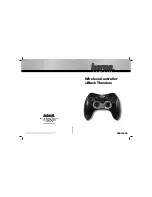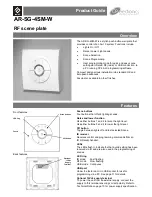
in settings, so without adequate application feedback, it might take some practice to gauge
where the set max output limits are.
Generally, setting the vibration pulse to activate at a value of “1” or the maximum output value of
the axes, and the vibration constant output to activate at a value of “2” or two times the max
output value of the axes, will provide for a comfortable window for learning where the max
output for a given axis is.
One mistake that some first-time users make is to instinctually bracing their hand downward for
stability, which causes Z-axis input. Balancing the arm rest such that a resting position does not
produce these forces, or increasing the Z-axis base deadzone can help prevent this unwanted
input.
5. Summary of the Settings Software
The joystick’s settings are stored in flash memory on the joystick’s base circuit board. The
settings program does not need to be running to use this joystick. The settings program is used
to change the stored settings, and to run diagnostic tests for troubleshooting.
Some examples of things the settings program can adjust are:
- Axis sensitivity, curves, and dead zones
- Vibration axis feedback settings (off by default, but can be helpful for learning)
- Knob ranges, dead zones, and inversion
- Separate modes to quickly swap between settings
- Handle rotational center balance
- LED functionality
- Button functionality
For full instructions on the settings software, see the document “Using the Sublight Settings
Software (Early Access)”
































